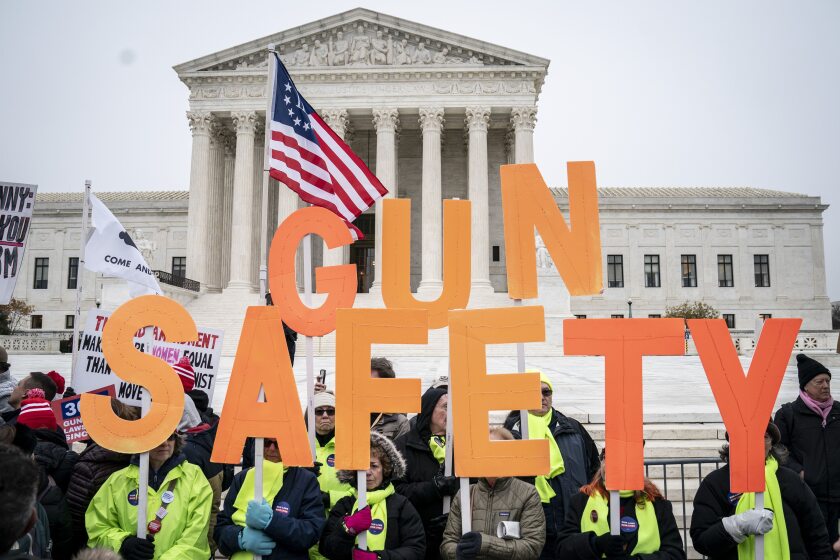Researchers examined mortality records and case details from the first three years of California’s Gun Violence Restraining Order law, a law enacted in 2016 that allows judges to prevent someone from possessing or buying a gun if they are deemed a threat to themselves or others.
Gun violence restraining orders were used most often in cases of threatened firearm assault or homicide, but in about 30 percent of cases, access to firearms was removed from individuals who threatened to commit mass shootings, according to the study published June 2 in the journal Injury Prevention. A mass shooting is defined as a shooting with three or more victims.
After the individuals who made those threats were prevented from possessing or accessing firearms, none of them went on to commit mass shootings, the study’s lead author, Veronica Pear, told McClatchy News.
While researchers can’t know if any of the threatened mass shootings would have been carried out had law enforcement officials not intervened with a gun violence restraining order, the data are still a testament to the “red flag” law’s effectiveness, she said.
“Yes, we need more evidence, and many of us who do research in this area are on the case, but it’s a common-sense law that has a lot of public support, including among firearm owners,” said Pear, who is also an assistant professor in the Department of Emergency Medicine at the University of California Davis Health. “It is being utilized in a way that is helping to prevent firearm violence.”
The law allows a petitioner — who could be a family member or law enforcement official — to alert police if someone makes a threat or exhibits threatening behavior, Pear said. Then, officers can file a petition in court, and a judge can issue an order that temporarily prevents the person from accessing firearms. If the person is still deemed a threat after a short-term period, the order can be extended for up to five years, she said.
After the mass shooting at an elementary school in Uvalde, Texas, that left 21 dead, policymakers have once again taken up the debate over gun control.
California’s gun laws were thrust into the spotlight when Texas Gov. Greg Abbott called the state’s gun control measures ineffective in the wake of the Robb Elementary School shooting. During a news conference held at Uvalde High School on May 25, Abbott suggested that the shooter suffered from mental illness and called for increased access to health care, according to the Texas Tribune.
Many advocates of gun ownership say policymakers should focus on mental health care to prevent mass shootings rather than restricting access to firearms.
But California Gov. Gavin Newsom responded to Abbott’s comments and said his state has one of the lowest gun mortality rates in the country.
In 2020, the year with the latest data available, California’s firearm death rate was 8.5 per 100,000 — the seventh lowest in the nation, according to the Centers for Disease Control and Prevention. Texas had a gun mortality rate of 14.2 per 100,000.
Pear said it’s not a coincidence that California has some of the strictest gun laws in the country and also some of the lowest rates of mortality due to guns.
“It’s not going to be just the (Gun Violence Restraining Orders) law or universal background checks,” she said. “What we’ve done in California that works really well, and that other states should consider replicating, is having a strong network of laws that work together to prevent people that might go on to commit acts of violence from accessing those weapons.”
©2022 The Charlotte Observer. Distributed by Tribune Content Agency, LLC.
Related Articles








